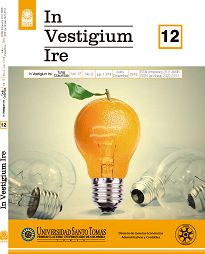Proem
Main Article Content
Abstract
Addressing issues such as the one that is intended to be developed in these Unes and that is proposed in the title, are interesting insofar as they become challenges not only theoretical but practical.The term Orange Economy in addition to pretending to offer a chromatic distinctive seems to want to locate us in a particular context with equally singular impacts Déribéré (1964). The study carried out on the subject and contained in the manual: «The orange economy.An infinite opportunity" by Felipe Buitrago Restrepo and lván Duque Márquez, expresses the importance of the creative and cultural industries in the development of countries like ours, where the economy is not very diverse compared to Mexico, the United States and Spain,among others.But what is the Orange economy? And what makes it up? The Orange economy has been defined by the IDB (lnter-American Development Bank) as the set of activities that in a chain-linked way allow ideas to be transformed into cultural goods and services, whose value is determined by their intellectual property content. The orange universe is composed of cultural economy and creative industries, in whose intersection are the conventional cultural industries and support areas far creativity (www.iadb. org, 26 Sep. 2018).Culture and knowledge are undoubtedly the economic components that generate wealth, it seems to be the slogan proclaimed by the Orange Economy. These elements are not new to Colombia as they have always been present in the national scenario. lt has been said and recognized that Colombian talent is indisputable not only locally, regionally, nationally, but also globally as well as its ancestral wealth in knowledge and traditions that are organized in consolidated knowledge to conserve cultural diversity which in turn is the source of creativity and innovation.Only until now do they seem to have value in an economy that had previously downplayed their importance and prominence, even reflected in sorne artistic and cultural activities that barely survive despite the talent, innovation and knowledge they possess. However, it must also be recognized that sorne artistic activities have had better luck than others, referring to the little ar much support they have received. Within these could be mentioned the cinema, sorne visual and scenic arts, music and fashion. lt is evident then that the contribution that ideas and cultural activities can offer to a national economy has begun to be recognized within this orange framework,as long as there is support, incentives and guarantees that facilitate their insertion in the economic cycle and not leave it to the fate ar influence of a few.Reconciling the relationship between economy and culture is not an easy task, given that far creative minds the monetary character with which they want to value and measure is odious and uncomfortable, perhaps because it does not really represent the creative and innovative value they possess. In addition, the lack of recognition of their work as legitimate, which deserves to have all the conditions and opportunities that are lacking, often leads them to swell the informality of their activities, denying them the opportunity to participate in a chain of value that benefits everyone.On the other hand, Buitrago and Duque in their manual, (p. 47) consider the economy and the expensive culture of the same coin: one is the abstract representation of its symbolic value and the other is its quantitatively precise validation, then comes to being the coin itself, the creation of both (p. 48) given the factors that are found in it: productive capacity, seriousness, solidity, entrepreneurial spirit or the values of the society that receive it. l n these, societies use their most important cultural symbols and their most recognized historical icons to adorn and support their value (p. 49).In this arder of ideas, to achieve in the reality and Colombian context that culture and economy complement each other and are seen as faces of the same coin, will be the biggest challenge that this Orange Economy proposal has to face, which shows to have political will, thanks to the current positions of its proponents.lt will be necessary, then, innovative and creative business models that allow transforming ideas into cultural goods and services whose value is determined by their intellectual property content and will undoubtedly be present, making use of the new and modern technologies of information and communication, in arder to contribute and promote connectivity to the insertion of these creative and cultural industries, thus contributing to the creative value cha in, accompanied by education and preservation of heritage, in this so-called Orange Economy.
Article Details
How to Cite
Ballesteros Rodríguez, G. E. (2019). Proem. In Vestigium Ire, 12(2), 6-13. Retrieved from http://revistas.ustatunja.edu.co/index.php/ivestigium/article/view/1717
Issue
Section
Editorial Vol. 12-2
Investigium Ire of http://revistas.ustatunja.edu.co/index.php/ivestigium is licensed under a Creative Commons Attribution-NonComecial-NoDerivatives 4.0 International (CC BY-NCND 4.0)


